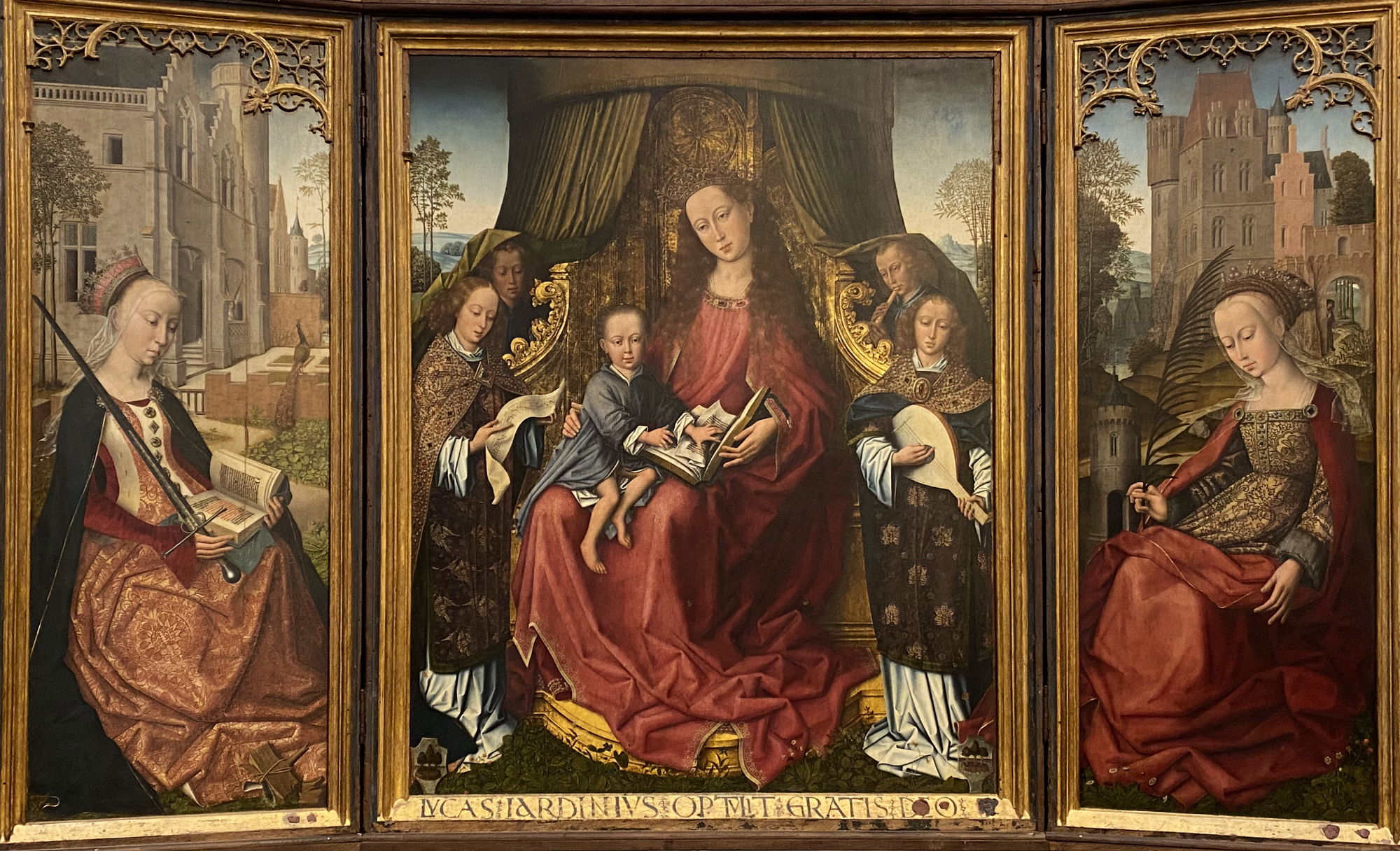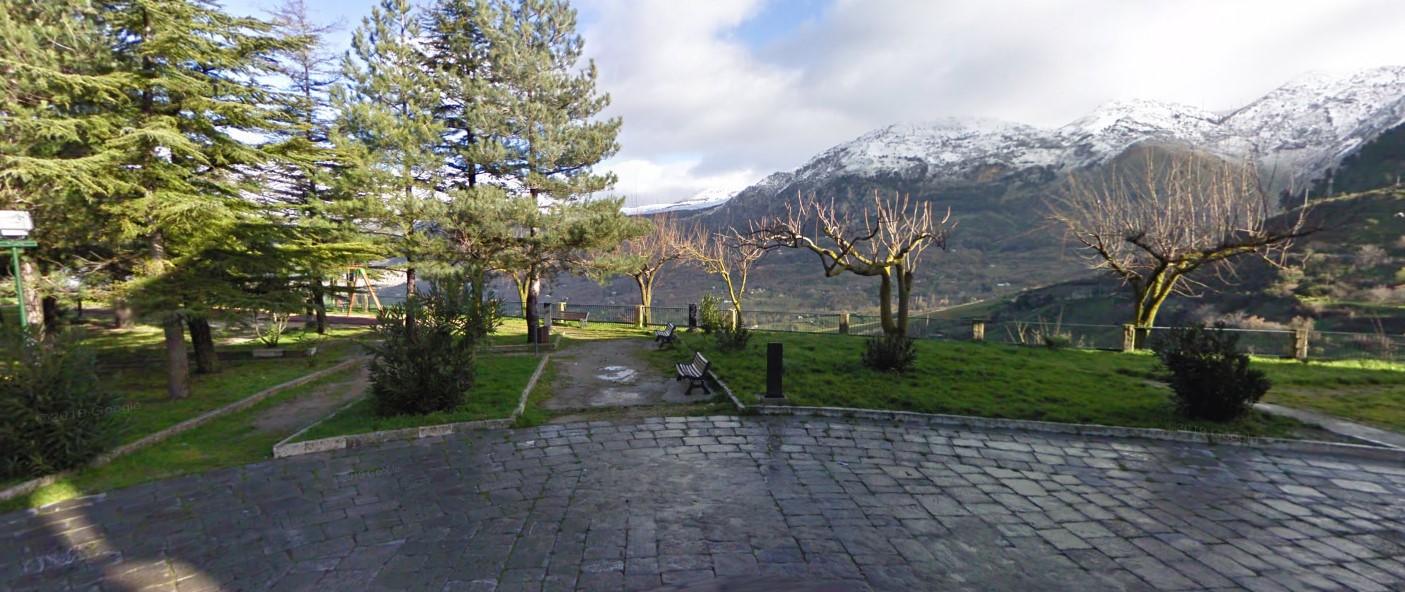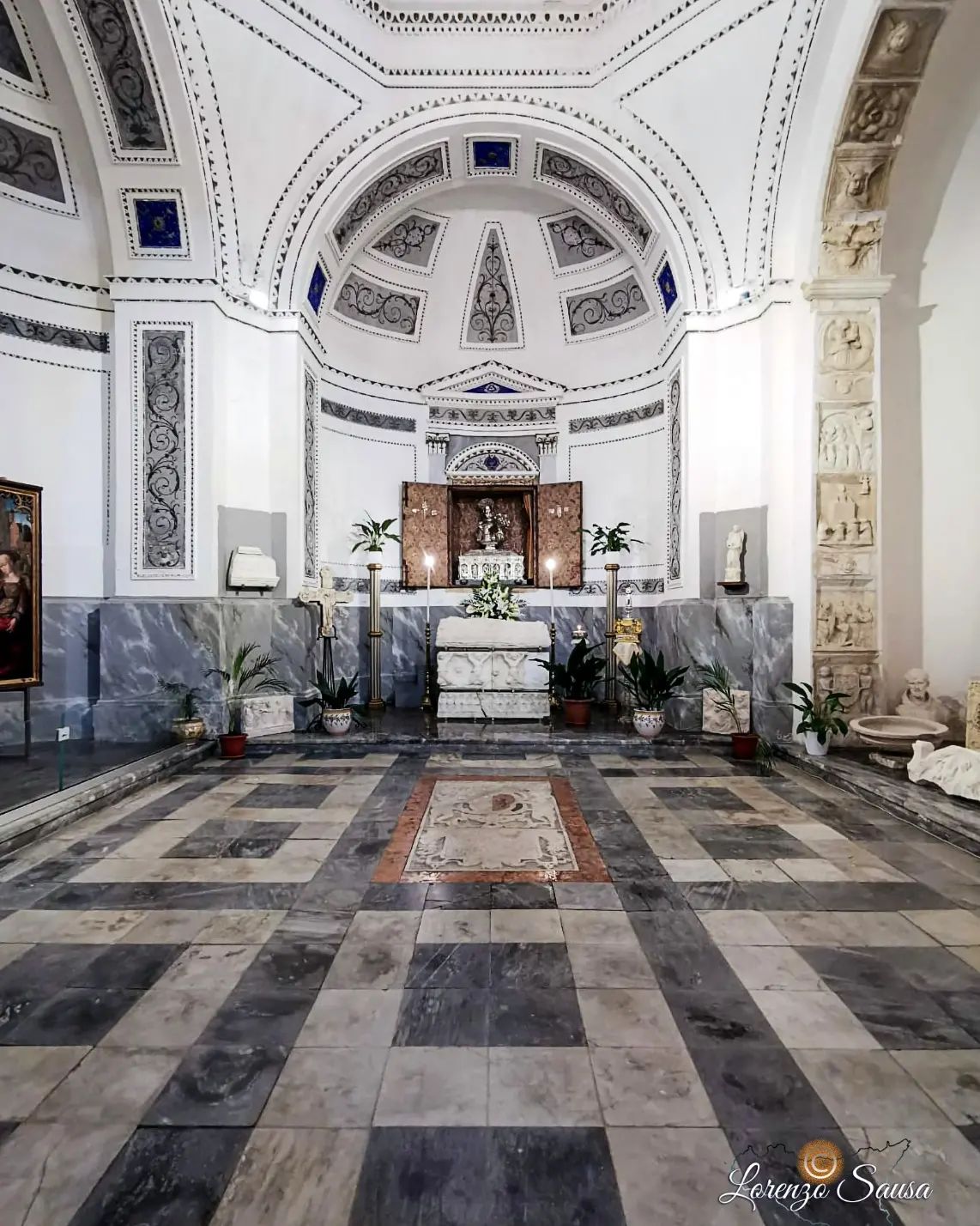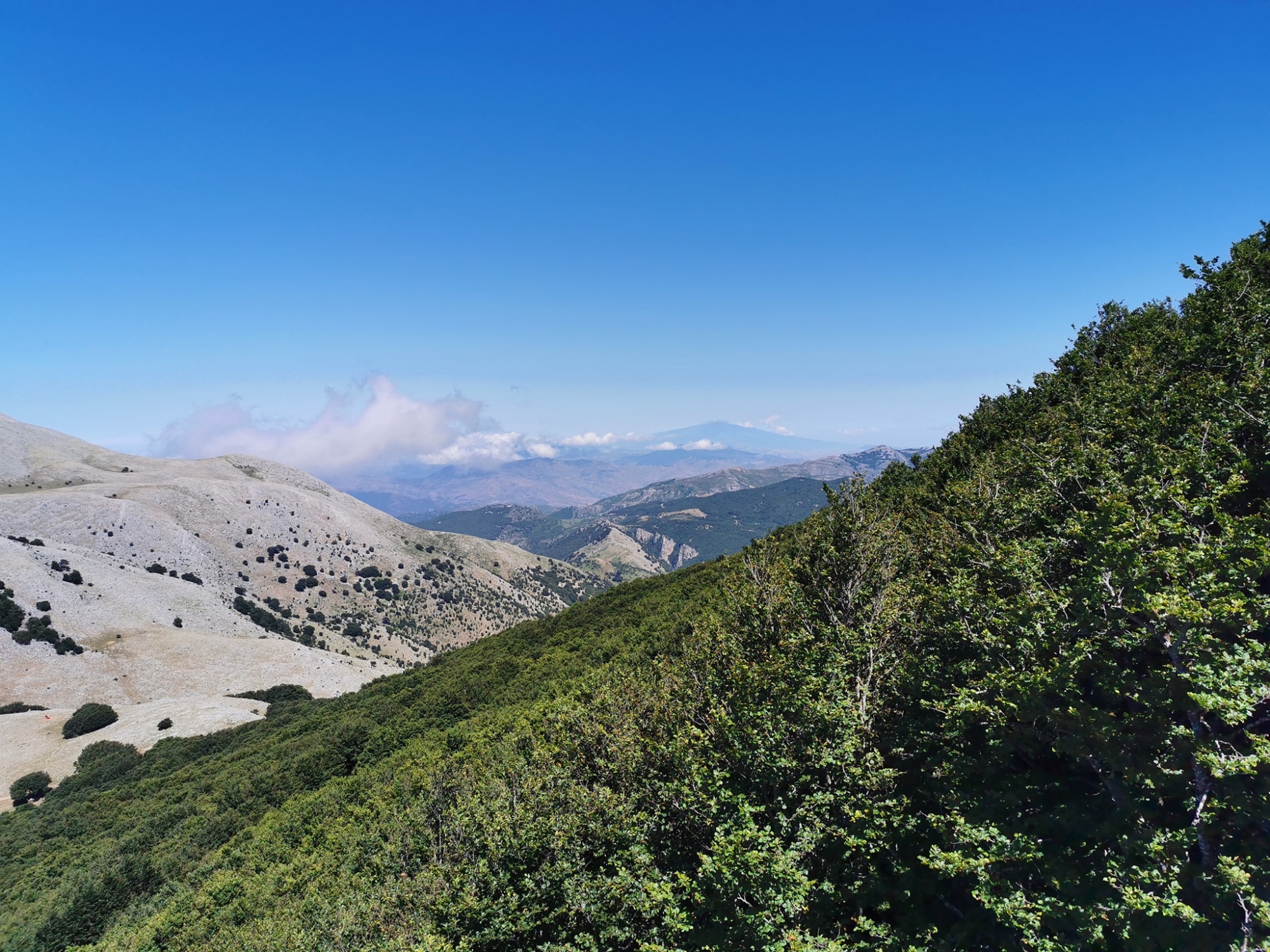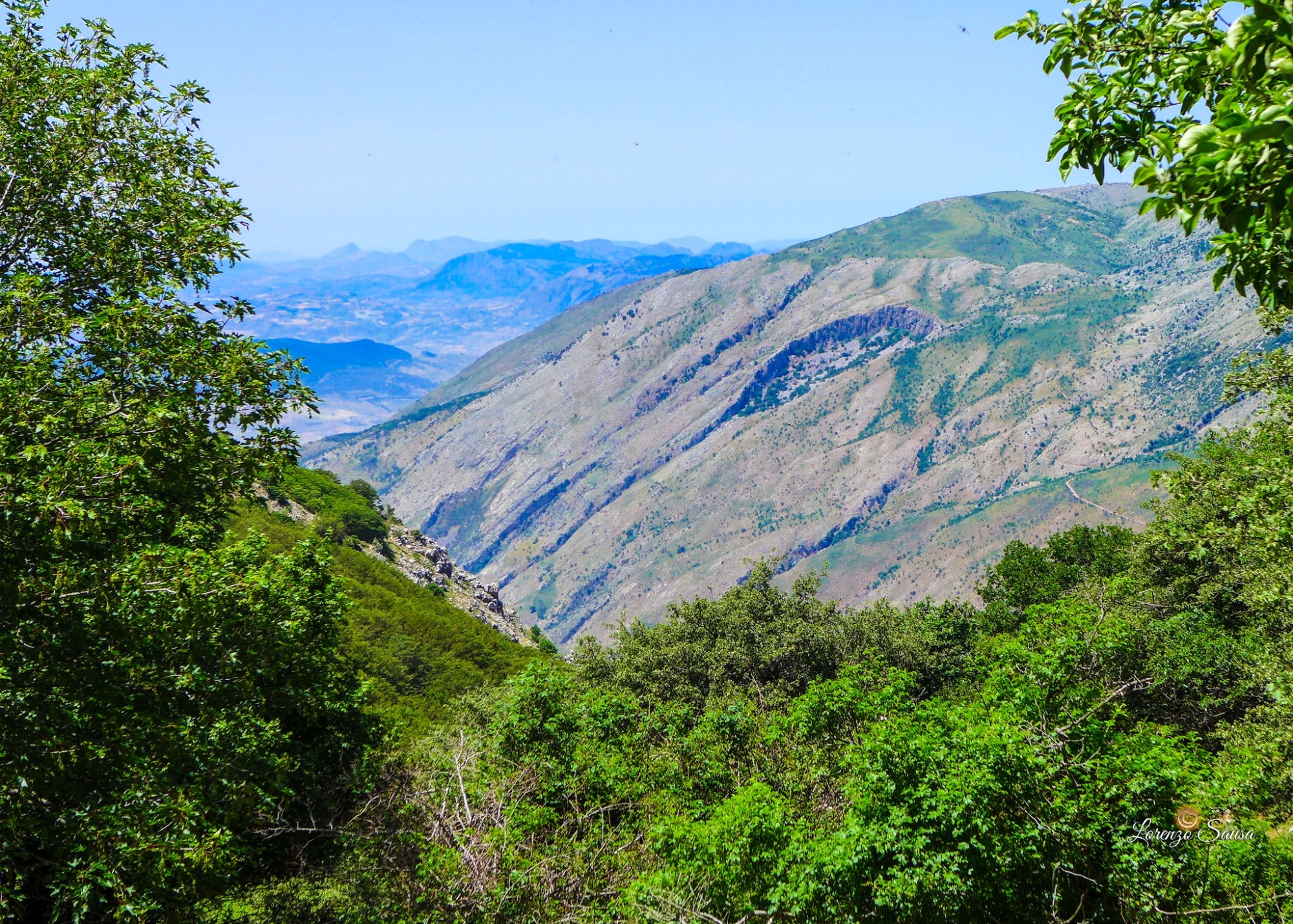"I dreamed of returning to my native village, which is not on the edge of the high Lombardy, but in the heart of a distant island, clinging to a high rock, and does not have such a quick and simple name, but one difficult to remember for those who were neither born nor have been there, and makes those who hear it for the first time smile." G.A. Borgese, The Unknown City, Mondadori, Milan, 1929, p.11
First stop: Piazza Matteotti / Via Giovanni Borgese: Piazza Matteotti / Via Giovanni Borgese
Your journey begins in the enchanting Piazza Matteotti, offering breathtaking views: the valley below, the majestic surrounding mountains, and a panorama that seems endless. From here, admire the Church of Carmine, known for its Crocifisso festival, and the fertile local crops, including the renowned Badda bean. Framing this scene is the rocky formation of "La Padella," shrouded in legend, with the towering peaks of the Madonie in the background. After soaking in this natural beauty, ascend Viale Europa to enter the medieval quarter of the village.
BORGESE GENIUS LOCI
"The highest point will not exceed a thousand meters, but in exchange, foreigners and Italians alike will discover the most flourishing oasis of Sicily’s interior; lands with picturesque and gentle names like Dirupo Bianco, Chiaretta, Santa Venera, blessed with water and shade, delightful in their diverse cultivation where the severity of the looming mountain is softened by the sea breeze channeling through the Greek valley of the Imera. Here, the prickly pear forms hedges for hazelnut groves, the olive tree twists between chestnuts and oranges, and the African agave does not disdain the company of the northern oak. It will be a good opportunity to learn that even in Sicily there are areas of rational, or nearly rational, agriculture, where Tuscan sharecropping prevails, and sometimes even Dutch tenant farming."
G.A. Borgese, The Great Circuit of the Targa Florio, published in L’Ora in November 1905, on the occasion of the first edition of the Targa Florio race held in spring 1906, now in Gandolfo Librizzi, The Journey of a Cosmopolitan: Borgese’s Human and Cultural Path through Letters to His Family, Palermo University Press, 2022, p.55
Second stop: Via Carlo V- Piazza Medici
You are now walking along the "Magna Via Francigena," a medieval route once traveled by merchants, pilgrims, and even Emperor Charles V. Along the way, you’ll discover two of Polizzi’s most beautiful churches:
- Badia Vecchia, featuring golden decorations and a splendid neoclassical grille adorned with floral motifs, considered one of Sicily’s finest.
- Badia Nuova, home to extraordinary artworks, including Sicily’s largest altarpiece and the Madonna del Venerdì Santo.
These treasures are nestled within the timeless Norman and Jewish quarters, offering an atmosphere that transports you back through centuries of history.
BORGESE GENIUS LOCI
"This village,” I told him as I paused, “has a name that is peculiar and difficult, almost like my own, and perhaps it owes its obscurity to this peculiar trait of its destiny. But Charles V visited it, and the landscape,” which I indicated with a motion of my hand, “is simple and grand. Several notable churches are here, and in one is the most beautiful Flemish triptych I have ever seen, how it ended up here no one knows. In the last century, the famous Cardinal Rampolla was born here.”
G.A. Borgese, The Unknown City, Milan, La Nave di Teseo, 2023 [1st ed. Milan, Mondadori, 1929], p.939
Third stop: Via Carlo V- Via Castelli - Chiesa Maria SS. Assunta o Chiesa Madre
Continue past the two Badias to reach the religious heart of Polizzi: the Chiesa Madre, where the village’s greatest treasure is preserved—the magnificent Flemish Triptych, whose beauty is steeped in mystery. Here, amidst Norman, Renaissance, and Neoclassical decorations, you can admire an extraordinary collection of art, including treasures related to San Gandolfo, Polizzi’s patron saint, and a silver monstrance by Gagini, so exquisite it was chosen to represent Sicily during the Italian Unity celebrations.
Walk through centuries of history surrounded by sculptures, paintings, and relics.
BORGESE GENIUS LOCI
"There were masses in churches adorned with sculptures by the Gaginis, other Lombards, or with the famous Flemish triptych [...]."
G.A. Borgese, Still Life: Melon and Ice Cream, Corriere della Sera, March 19, 1952, now in Gandolfo Librizzi, The Journey of a Cosmopolitan: Borgese’s Human and Cultural Path through Letters to His Family, Palermo University Press, 2022, p.164
Fourth stop: via Cardinale Mariano Rampolla – Via Garibaldi – Vicolo Sant’Orsola – Via Vinciguerra – Via San bartolomeo – Piazza Giuseppe Antonio Borgese – Casa Fondazione Borgese
Leaving behind the upper part of the village, immerse yourself in the historic heart of Polizzi, surrounded by grand noble palaces, Baroque churches, monumental staircases, and alleys filled with timeless charm.
Midway along the main street, and continuing into the lower quarter of Arab origin, you’ll reach the Borgese Foundation, the birthplace of the writer who drew inspiration from these places for many of his works. Here, indulge in an intimate and poetic experience—a journey through the words and thoughts of Borgese.
BORGESE GENIUS LOCI
"And so I returned there, in a light that was neither of day nor evening, somewhat rosy and grayish, and the village appeared whitish and silent from a bend in the road, in a desolate and rocky horizon. Someone was certainly walking beside me, and I acted as their guide."
G.A. Borgese, The Unknown City, Milan, La Nave di Teseo, 2023 [1st ed. Milan, Mondadori, 1929], p.939
Fifth stop: Largo Santo Spirito – Via Santi Gagliardotto – Piazza Santissima Trinità
Finally, follow the captivating “speaking staircases” to reach the most expansive and picturesque square in the Madonie region. Here, take a seat and let your gaze wander over the breathtaking panorama that stretches to the horizon—from the mountains to the inland valleys, from golden wheat fields and forests to the sea.
This spot, often celebrated by Borgese, is a symbol of Polizzi’s social life and home to the Church of Santa Maria lo Piano, a FAI landmark that once hosted the local parliament when Polizzi Generosa was part of the Sicilian Parliament. Here, you can enjoy a privileged view or one of the most enchanting sunsets in Sicily.
BORGESE GENIUS LOCI
"[...] until one reaches this village perched atop a wild, thousand-meter-high rock. It earned its honorary epithet of Generosa for the magnificence with which it redeemed its privileges, often trampled upon by the arrogance of Aragonese kings, and it was quite important and populous in the Middle Ages, as even Baedeker teaches us. It had a castle and a mosque, and later, on a notable occasion, it was deemed worthy to host the Parliament of the Kingdom..."
G.A. Borgese, The Great Circuit of the Targa Florio, published in L’Ora in November 1905, on the occasion of the first edition of the Targa Florio race held in spring 1906, now in Gandolfo Librizzi, The Journey of a Cosmopolitan: Borgese’s Human and Cultural Path through Letters to His Family, Palermo University Press, 2022, p.55

